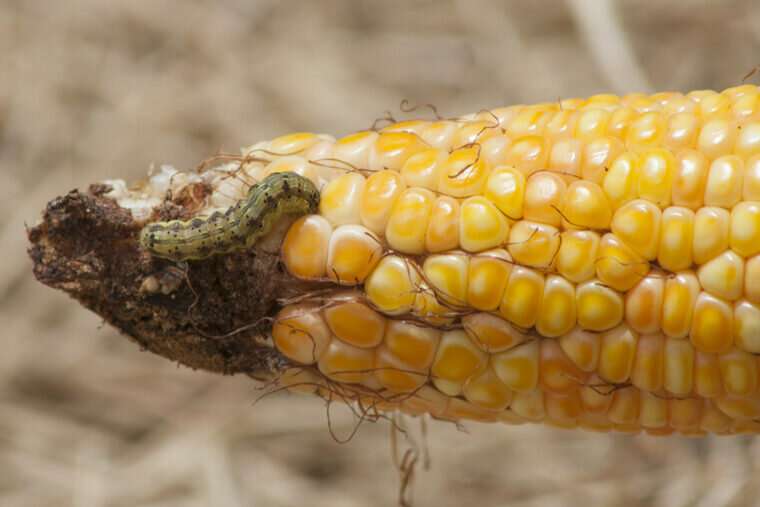Study first to show processes determining fate of new RNA pesticides in soils

A new generation of pesticides can be used to control pest insects by compromising the bug's ability to create essential proteins. These gene-silencing pesticides can be genetically engineered into agricultural crops such that these crops can literally grow their own defense.
New research from the McKelvey School of Engineering at Washington University in St. Louis shows how these emerging pesticides move through and degrade in soils. The research was published last month in Environmental Science & Technology.
Although the pesticide is created inside the plant, the questions about its degradation are similar to conventional pesticides applied externally to the crop: Does it break down? If so, under what conditions? In the soil? In lakes and rivers? What is the ecological risk?
Before these questions can be answered however, there needs to be a way to trace the pesticide and follow it as it moves and degrades in the ecosystem.
Kimberly Parker, assistant professor of energy, environmental & chemical engineering, and a team of collaborators devised a method to track this new pesticide in soils and to begin to understand what processes affect its lifespan.
This new pesticide is a molecule of double stranded Ribonucleic acid, or RNA. When a pest eats this pesticide, it prevents the critter from making essential proteins, leading either to stunted growth or to death.
RNA is a macromolecule—meaning: it's large—and because of its size, it cannot be studied through the typical means used for conventional pesticides.
The research team devised a method to tag a pesticide molecule with a radioactive atom, allowing them to follow it as it cycled through closed soil systems representing different scenarios. They were able to quantify the pesticide and its components at just a few nanograms per gram of soil.
With their method to measure the pesticide, the research team next investigated what happens to the pesticide in several soil samples. They found that the enzymes in soil can break down the pesticide. In addition, the microbes in soil "eat" the pesticide as well as the fragments left behind by the enzyme reactions.
However, in some soils, another process occurred: the pesticide attaches to the soil particles, like minerals and organic detritus. "In agricultural soil," Parker said, "there is adsorption"—when molecules adhere to a surface. "The pesticide sticks to the soil particle," she said.
"We have found that the soil particles may actually have a protective effect on the pesticide," Parker said, "slowing down the rate of pesticide degradation." The enzymes and microbes have a more difficult time breaking down pesticides that have attached to the soil, but the degree to which the soil protects the pesticide varied among the soils tested.
"Currently our working hypothesis is that in finer soil, there are more particles available for adsorption," Parker said. The more soil particles, the more surfaces for the pesticide to stick to, enhancing that protective effect.
"Now that we have identified the major processes controlling pesticide degradation in soils, we will next investigate in detail the variables that control these processes to enable accurate ecological risk assessment of double-strand RNA pesticides," Parker said. "This will allow us to understand whether or not these new pesticides pose a risk to ecosystems."
More information: Kimberly M. Parker et al. Environmental Fate of RNA Interference Pesticides: Adsorption and Degradation of Double-Stranded RNA Molecules in Agricultural Soils, Environmental Science & Technology (2019). DOI: 10.1021/acs.est.8b05576
Journal information: Environmental Science & Technology
Provided by Washington University in St. Louis




















